In the Berber (Amazigh) villages of the Maghreb, whether in Morocco, Algeria or Tunisia, men have always lived in close relation with nature, placing it before their own condition. This close connection with the environment provides a feeling that mixes both fear and respect, and it is nature that is the source of all artistic and material creative inspiration.
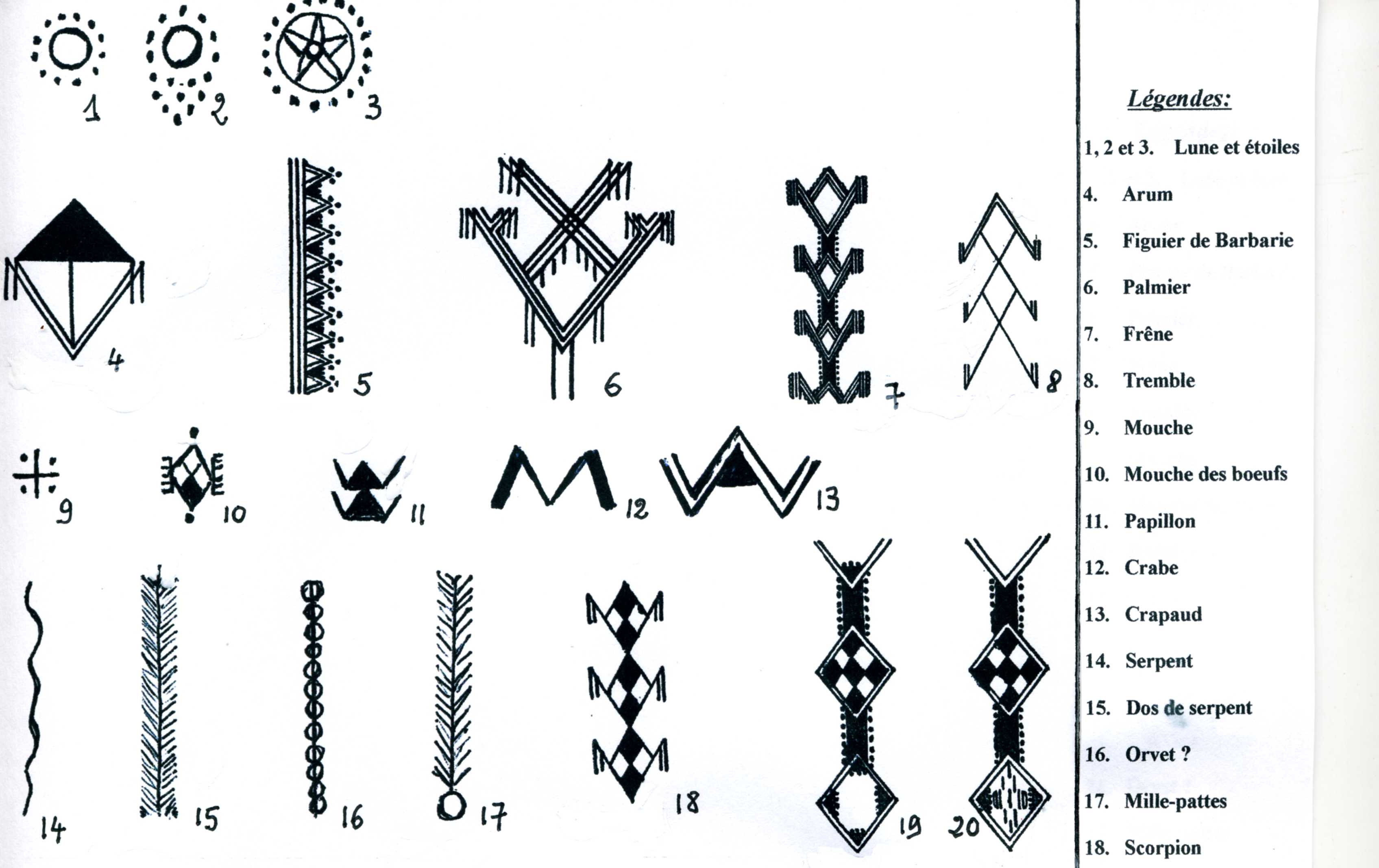
Berber symbols of Kabylia in Algeria - © Mohand Akli Haddadou
Very ancient remains show cave paintings mixing art and environment. The first designs were very simple, in the shape of a cross or lines, then we saw more elaborate designs of wild and domestic animals appear, as well as hunting scenes.
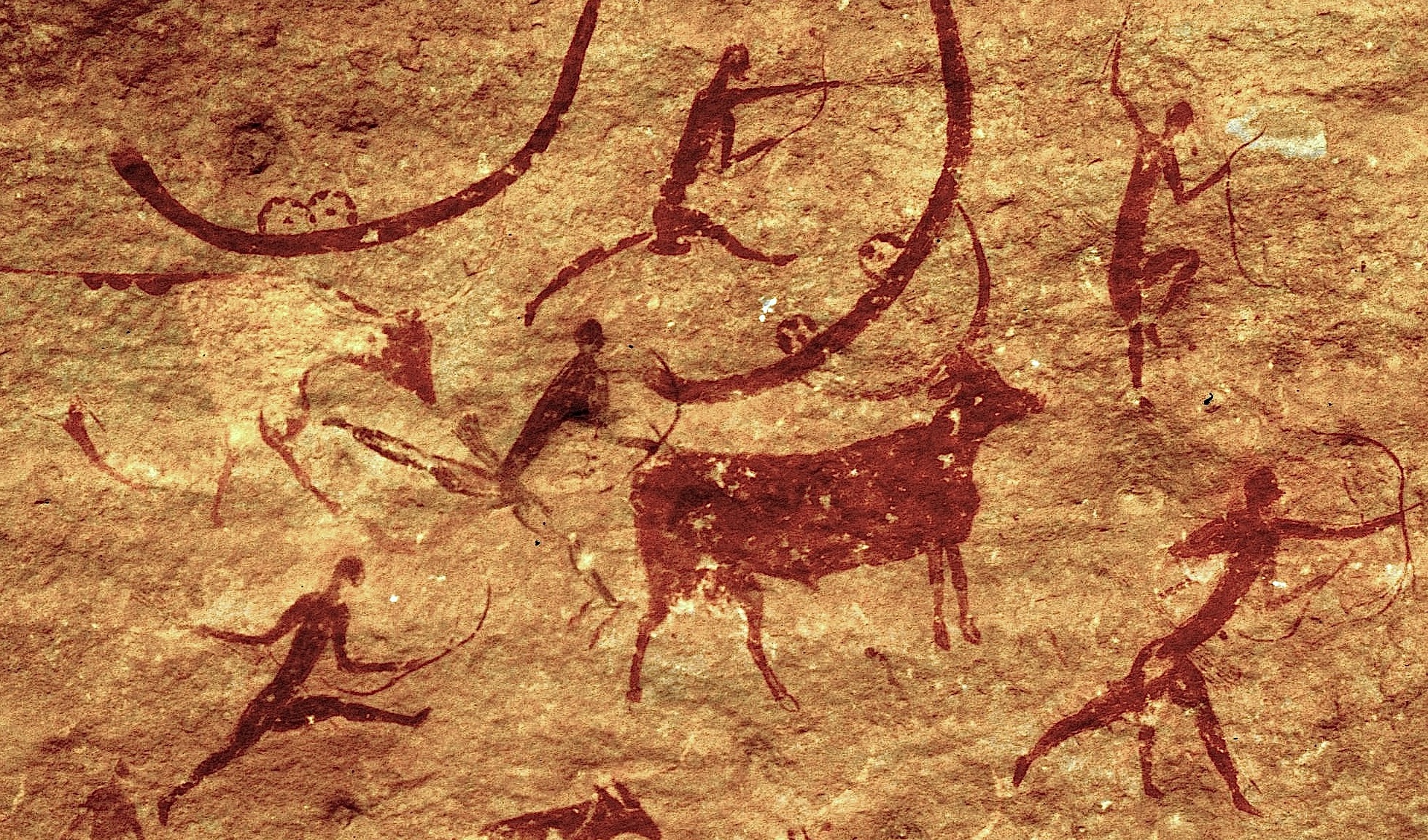
Berber rock paintings from the Tassili n'Ajjer site in Algeria - © Gruban
The history of Berber motifs is very old. It is not known whether the first designs were used on the body in the form of tattoos, or on material objects (carpets, fabrics, terracotta, leather or wood objects, etc.). What is certain is that the same patterns have existed for a very long time in both forms.
Models differ depending on the tribe. Therefore, it is possible to easily identify which region the objects come from. Some patterns represent specific symbols that have a particular utility, while others simply have an aesthetic function. The tattoo is part of the rites of Berber culture, whether on the hands, arms, feet, on the forehead between the two eyebrows, on the chin or on the cheeks.

Young Algerian girl from Ouled Naïl in 1905 tattooed between the eyebrows and on the cheeks - © Lehnert & Landrock
However, nowadays, women in the Berber regions hardly practice permanent tattooing anymore. They now use henna to reproduce the same patterns, especially on the hands and feet. Certain motives are used to fight the evil eye, cure certain diseases, promote fertility or even protect women from betrayal by their husbands. Others simply have an aesthetic role.
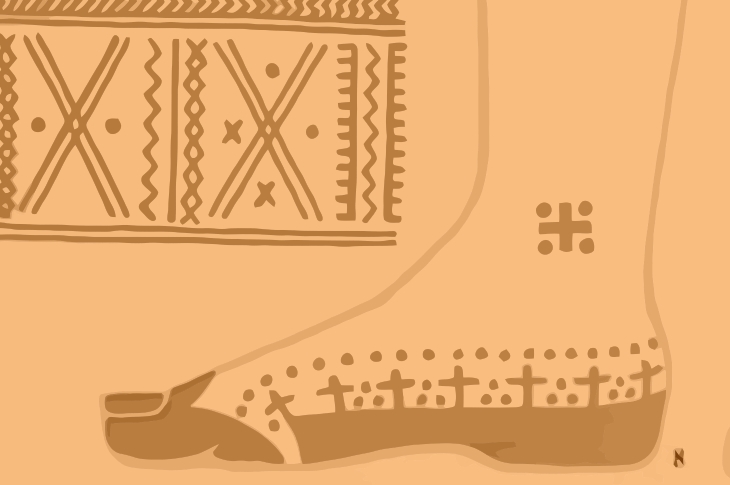
Berber tattoo from Morocco. The cross-shaped pattern on the ankle is intended to promote fertility.
Depending on the region, Berber ceramics are practiced by men or women. In regions where it is women who practice it, the patterns are generally more varied and modeled on the models of henna tattoos. The pottery also has the appearance of a woman's body with all that constitutes it. The different parts of the pottery even bear the names of the parts of the human body: arms, stomach, neck, mouth ...
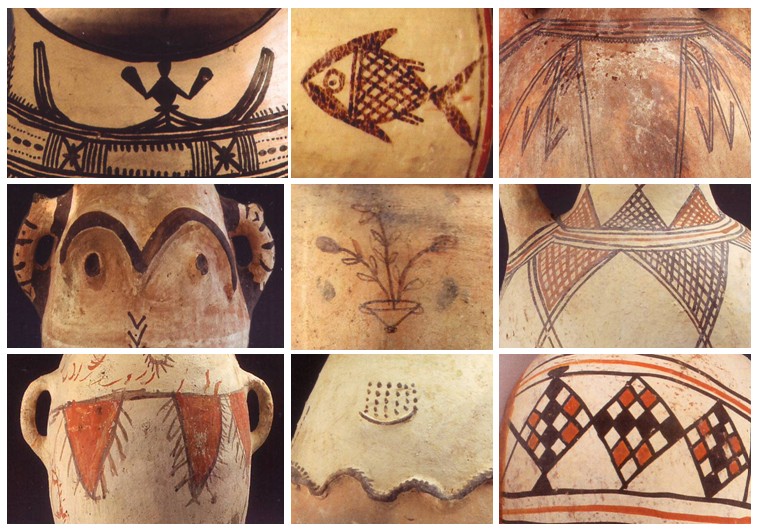
Berber pottery from Morocco - © Milartino
The Berber carpet has simple patterns with straight lines and geometric shapes. The most common shapes are rhombuses, rectangles, and triangles. Each carpet is a unique piece resulting from the imagination of the Berber craftswoman: "making a carpet is like making henna", some say. Weaving the rug requires memorizing the overall pattern, colors and patterns to use. Even if the Berber woman knows an infinite number of patterns, she weaves her carpet so that it responds to the specificity of her tribe.

Moroccan Berber carpets from Ait-ben-Haddou - © Grand Parc Bordeaux France
Each Berber region has indeed its peculiarities which can be found in the color, shapes and size of the patterns, the weaving technique, the material used, the shape of the knots, etc. These differences are often imposed by the environment. For example, carpets from the Tazart region in Morocco are mostly yellow, red and orange because henna and saffron are found in abundance. Although Berber patterns are often similar in different regions, the way these patterns are used to make the rug is specific to each tribe.
Even today, Berber motifs and symbols are an integral part of the culture of North African countries, not only in the Berber-majority regions but also in all the regions which have inherited this millennial tradition.
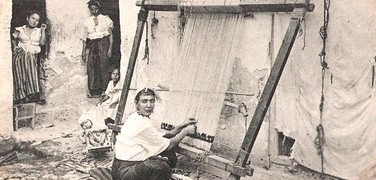 The loom: humanity's first machineRead more
The loom: humanity's first machineRead more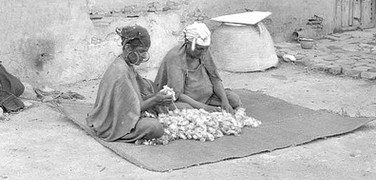 Preparing the wool13/11/2021Posted in: HandicraftRead more
Preparing the wool13/11/2021Posted in: HandicraftRead more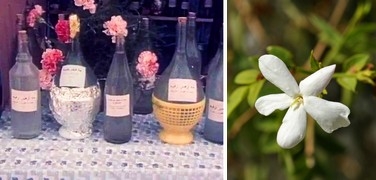 Floral waters / hydrolats in Tunisia: distillation and virtues29/01/2021Posted in: HandicraftRead more
Floral waters / hydrolats in Tunisia: distillation and virtues29/01/2021Posted in: HandicraftRead more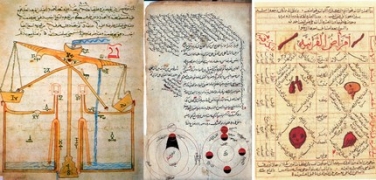 Arabic words in the French language13/01/2021Posted in: CultureRead more
Arabic words in the French language13/01/2021Posted in: CultureRead more Reviving the Tunisian carpet craftswomanship14/12/2020Posted in: HandicraftRead more
Reviving the Tunisian carpet craftswomanship14/12/2020Posted in: HandicraftRead more
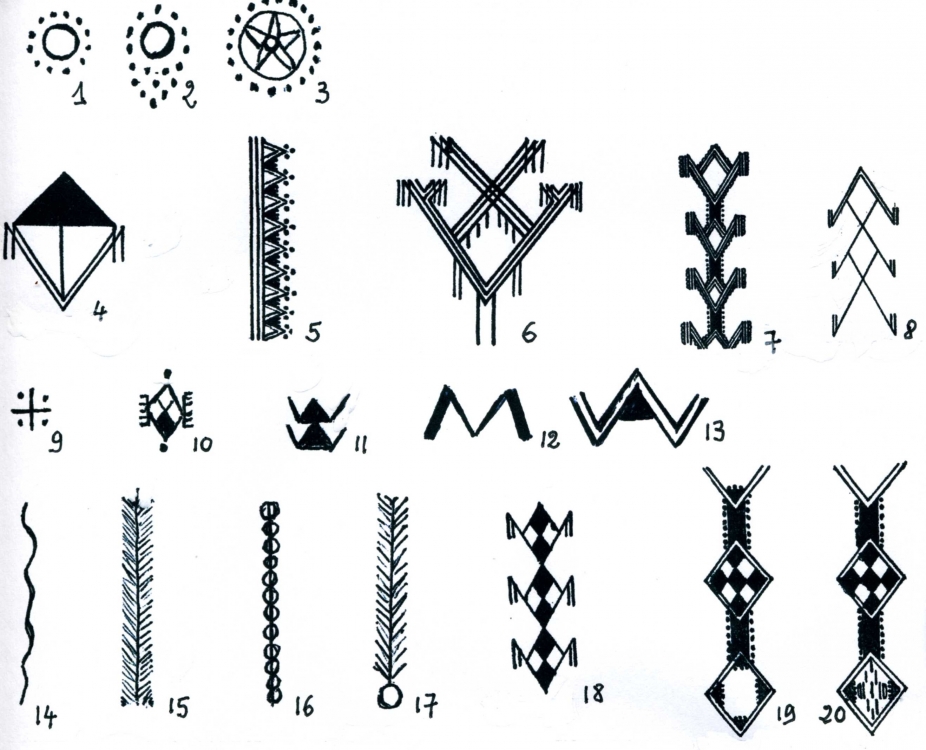











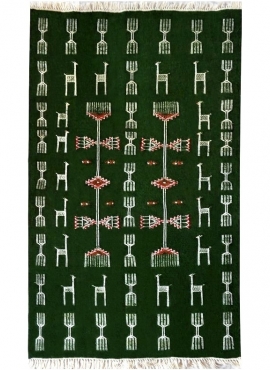


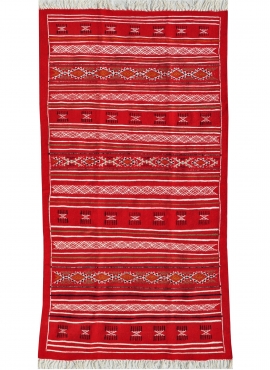






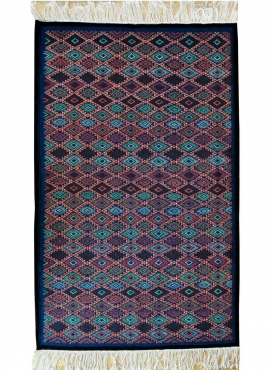






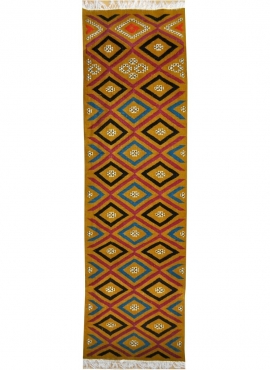












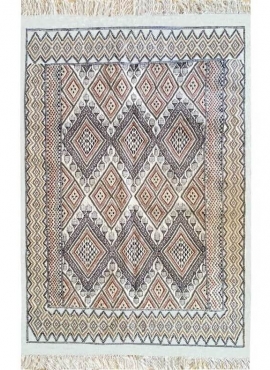



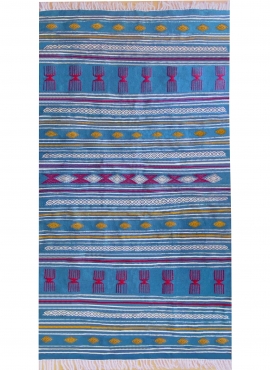

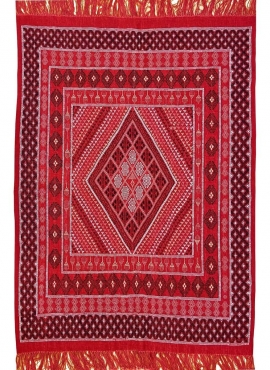
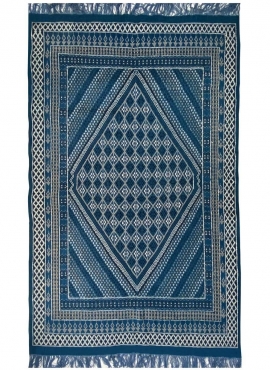
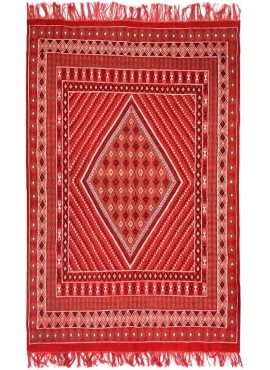
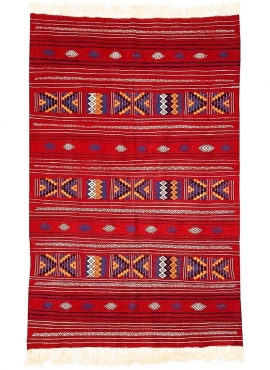
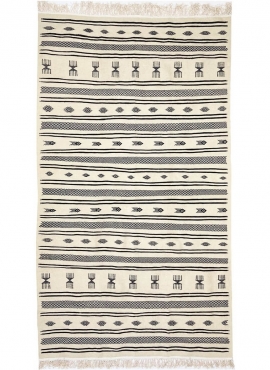
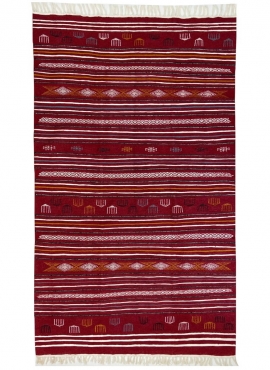
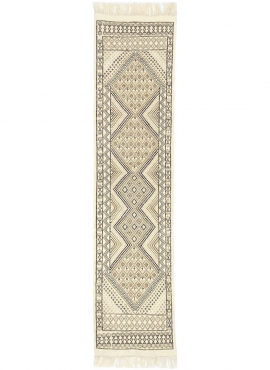



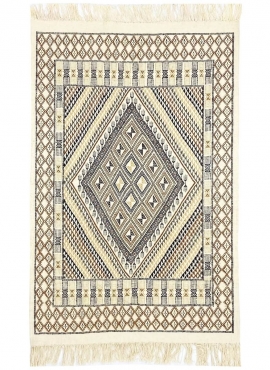
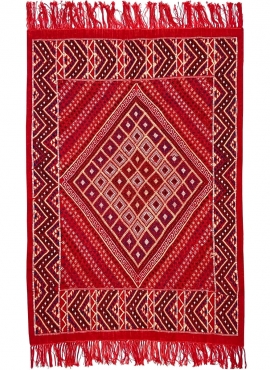

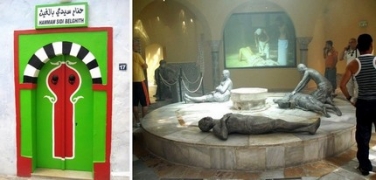


Leave a comment
Comments
symbole definition berbere pour un tatouage
By: Elena On 09/04/2022Bonsoir
Je souhaite savoir où je pourrai trouver les différents symboles berbères et leur signification.
It’s an Arab tribe!!
By: Soso On 23/02/2021It’s an Arab not a berber. Ouled nails are Arabs!!
Replied by: Aurélie On 23/02/2021
GARNIER
By: GARNIER On 02/07/2020Bonjour,
Je souhaite savoir où je pourrai trouver les différents symboles berbères et leur signification. J'ai pour projet un tatouage et j'aimerai qu'il ai une vrai signification.
yallan
By: Yallan On 12/04/2020en kabylie c'est dans la localité de Maatkas, tizi-ouzou, ils y organisent d'ailleurs chaque année un festival de la poterie berbère
gerry
By: Gerry On 24/01/2020Ces symboles sont vraiment magnifiques, idéal pour un tatouage original
Arbrobijoux
By: Arbrobijoux On 17/01/2020Tres interessant et ces couleurs c'est tres joli
damien
By: Damien On 18/11/2019Très jolie cette photo en noir et blanc et les poteries sont vraiment jolies ! Les peintures rupestres de la chasse sont impressionnantes. Merci
ragnar
By: Ragnar On 23/09/2019c'est vraiment très beau ces symboles, j'ai toujours été fan des tapis amagiz
Alex
By: Alex On 20/09/2019Très bel article sur le tatouage permanent. Les femmes des régions berbères sont des artistes magnifiques.
Somer Dufresne
By: Somer Dufresne On 17/06/2019Chaque région berbère a ses particularités que l'on retrouve dans la couleur, les formes et la taille des motifs et chacune a une signification profonde. J'aime beaucoup la manière d'écrire et la profondeur du contenu.
henri
By: Henri On 04/05/2018Les symboles sont reliés à différents us et coutumes pour chaque pays. Pour ma part, je les collectionne pour en faire de l'ornementation dans mes pièces à vivre.
Rosemarie Gregori
By: Rosemarie Gregori On 03/04/2018Bonjour,
Je voudrais savoir dans quels villages se pratique la poterie amazigh, soit pour me documenter avant d' aller au Maroc pour un stage.
Merci à vous,
Rosemarie
Jean Rivallain
By: Jean Rivallain On 04/08/2017La nature a toujours été une source d'inspiration pour les peintres. C'est en effet très joli !
sonia boudjamai
By: Sonia boudjamai On 10/03/2017merci beaucoup pour cet articles. c'est vraiment intéressant.
Anne
By: Anne On 19/02/2017C'est vraiment magnifique.
J'aime beaucoup l'art de la poterie berbère.
Il y a 20 ans j'ai ramené de Maroc plusieurs objets en terre cuite: une statuette de'une femme, une femme avec son bébé,
son mari, une tortue, plusieurs petites têtes..
Je voudrais retrouver d"autres objets de culture berbère en terre cuite, mais à Paris je n'en trouve pas.